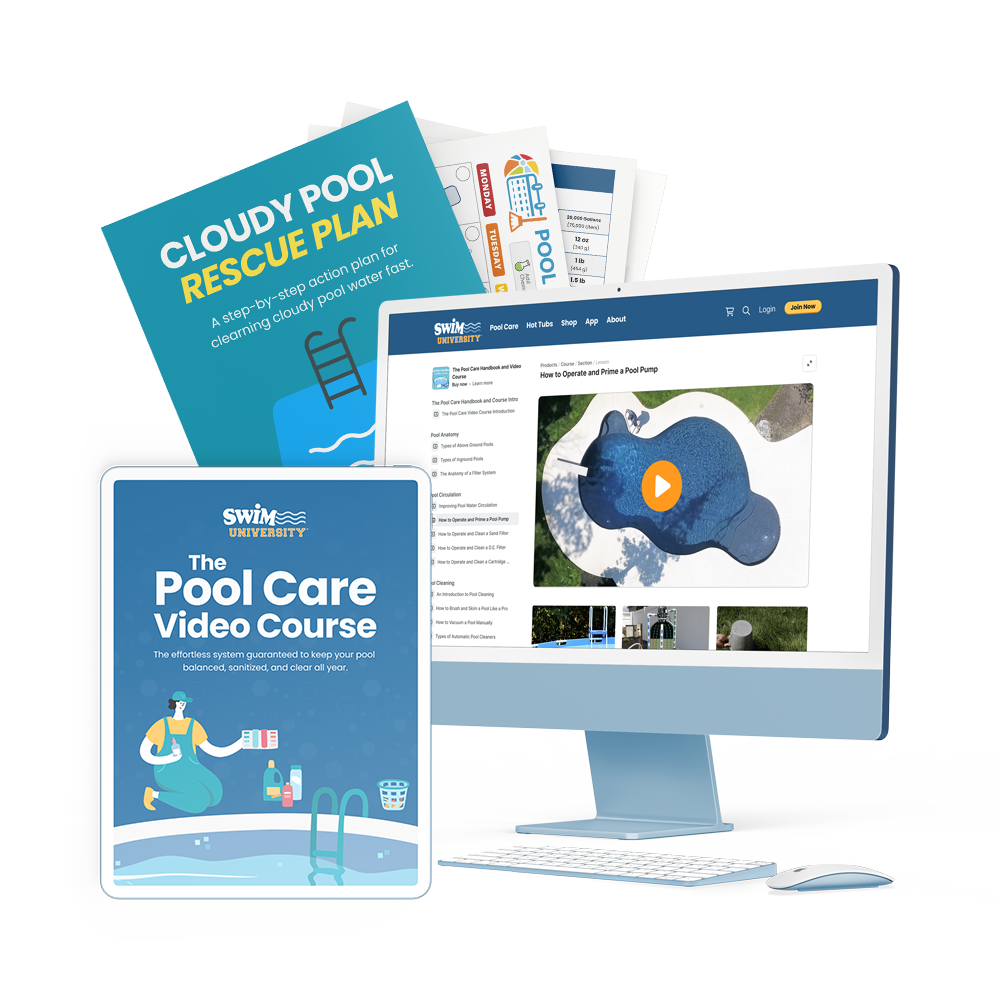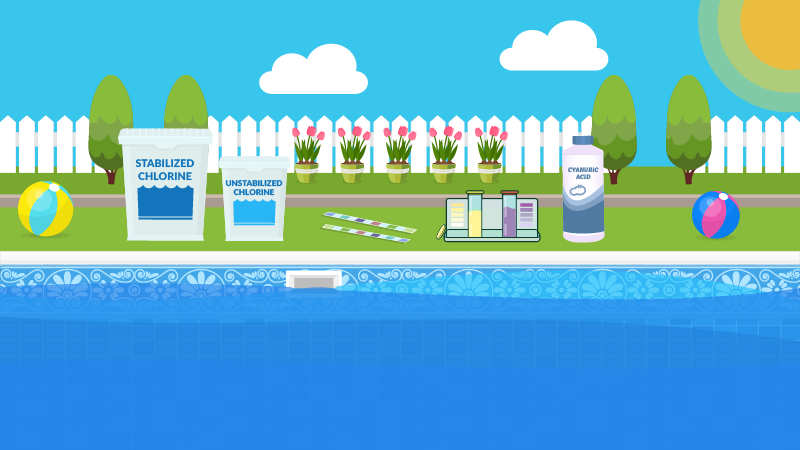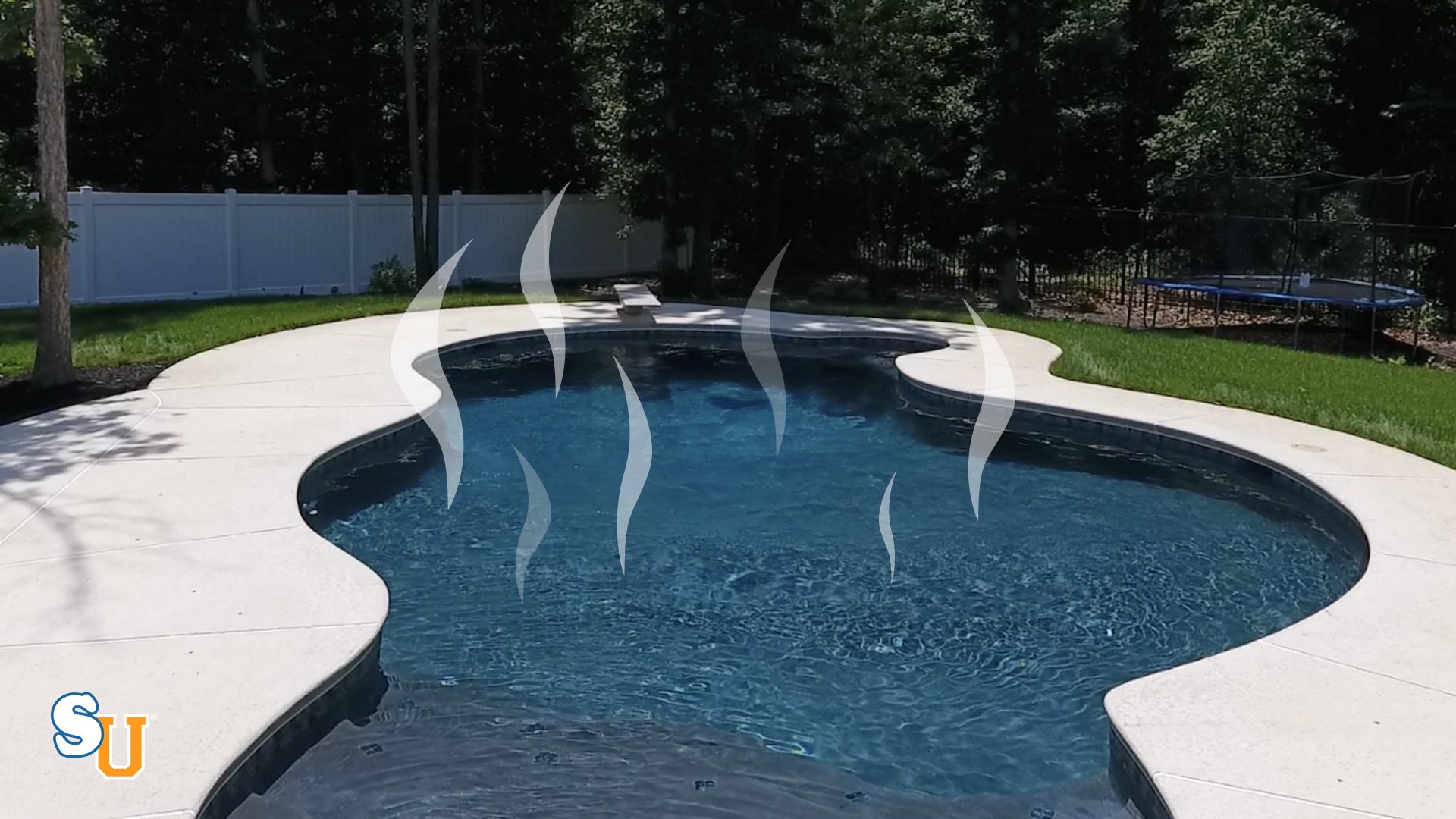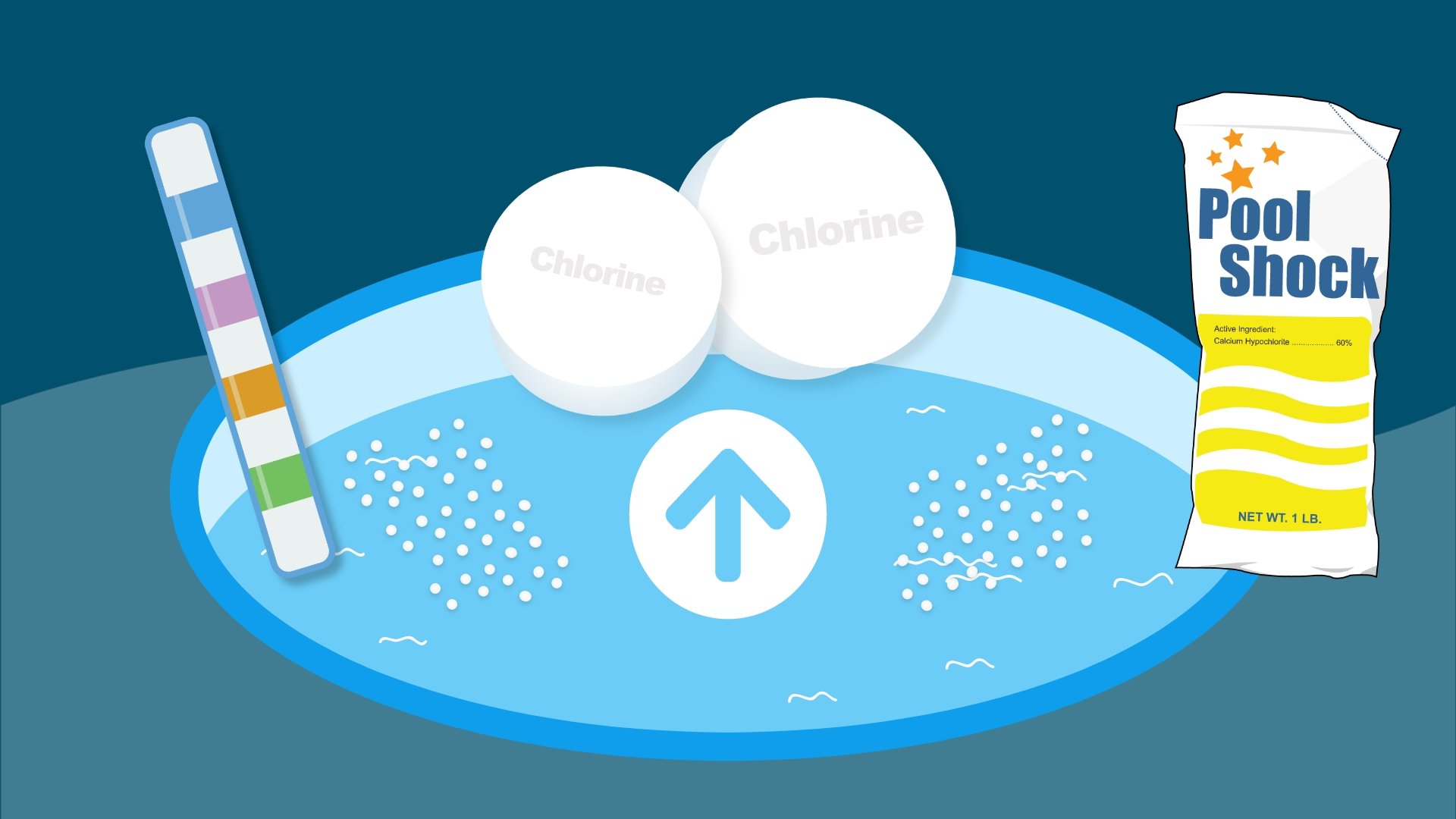How to Add Chlorine to a Pool (Tablets, Granules, Liquid)
Whether you’re using tablets, granules, or liquid chlorine, you need to add chlorine to your pool about once a week. But how you add it depends on the type of chlorine you’re using. So here’s a quick guide on how to add chlorine to your pool. Let’s dive in.
Before Adding Chlorine To Your Pool, Test The Water First
Your free chlorine should be between 1 and 3 PPM, with 3 PPM being ideal. These levels naturally drop as your chlorine gets used up throughout the week. They’ll also drop after heavy pool use if your cyanuric acid levels are too high or too low or if a lot of organic contaminants or rain has gotten into your pool water.
Tests for 7 important chemistries in seconds: Total Hardness, Total Chlorine, Total Bromine, Free Chlorine, pH, Total Alkalinity, and Cyanuric Acid.
Plan to test and add chlorine to your pool water once a week to keep your levels in range. But if your chlorine levels are at zero or rapidly drop even after adding chlorine, you might have a larger issue. Be sure to check out our other video on how to raise your free chlorine when this happens.
When testing your chlorine levels, you should also test and adjust your pH and total alkalinity.
When your pH is within range, it helps your chlorine work effectively. Total alkalinity helps keep your pH from fluctuating. So each week, test and balance your alkalinity, your pH, and then your chlorine—in that order.
Stop wasting time and money with confusing water chemistry and maintenance. Our effortless system guarantees to keep your pool balanced, sanitized, and crystal clear all year. Works for all pools including saltwater.
How Much Chlorine Does Your Pool Need?
For weekly maintenance, here’s a rough estimate of how much chlorine to add to a 10,000-gallon pool:
- A half cup of granules.
- 2-3 chlorine tablets (pucks).
- A gallon of liquid chlorine.
This is enough chlorine to keep things in range week to week. It assumes your chlorine levels aren’t constantly dropping to zero or that you don’t have chronically high chlorine. If you need more help calculating exactly how much chlorine to add, be sure to check out our other video.
Okay, now we’re ready to add chlorine to the water. Always wear the right safety gear, like gloves, when handling chlorine. And make sure your pump is running to help your chlorine circulate.
How to Add Chlorine Tablets To Your Pool
You can use a floating dispenser or an automatic chlorinator. If you have a floating dispenser, add your tablets to the floater, adjust the dispenser’s setting, and toss it back into the water while the pump is running.
Keep in mind that floaters tend to dispense chlorine unevenly, which means your levels may fluctuate. They can also get stuck in one spot in your pool, like behind ladders, which can discolor and even damage your pool liner.
That’s why we recommend an automatic chlorinator or chemical feeder. If you’re using a chlorinator, turn off your system before adding tablets to the feeder. Once they’ve been added, close the chlorinator and turn the system back on. Adjust your chlorinator setting as needed.
This automatic chlorinator is perfect for the pool owner who hates fussing with chlorine tablets. With its dial control valve, you can easily adjust the chlorine level depending on your pool's size.
Keep in mind that tablets will only dissolve in your chlorinator when your pump is running. So whenever your pump is off, your tablet won’t dissolve and disperse into your pool.
Whether you’re using a floater or an automatic feeder, don’t just fill it to the top with chlorine tablets. Use the correct amount of tablets based on the amount of water you need to sanitize. Avoid using 3-inch tablets in smaller pools since they can quickly overchlorinate your water.
Your chlorine reading may take time to change since tablets dissolve slower than granules or liquid chlorine. Water temperature also affects how quickly tablets dissolve.
Finally, keep in mind that whenever you’re adding tablets to your pool, you’re also adding cyanuric acid. Cyanuric acid, or CYA, is added to trichlor chlorine tablets to protect your chlorine from breaking down under direct sunlight. But CYA can start to build up in your water with tablets, so be sure to test these levels each week.
Unfortunately, chlorine tablets are acidic. That means your pH levels can drop when using them. So, if you’re having trouble keeping your pH levels in range, your tablets may be the issue.
Stock up and save money on chlorine tablets for the season by getting the standard 3-inch stabilized chlorine pucks.
How to Add Chlorine Granules
These are added directly to your pool water. Start by measuring out your chlorine granules in a measuring cup. Some chlorine granules work best when pre-dissolved in a bucket of water. Add your granules to a bucket of pool water, using a wooden stick to stir them in. Then, pour this mixture around the perimeter of your pool, starting in the deep end, while the pump is running.
Pre-mixing granules helps prevent them from settling on the bottom of your pool. But always follow the manufacturer’s directions. If you add your granules directly to the water and notice them settling on the bottom of your pool, use a pool brush to help them dissolve. And never add granules to an automatic chlorine feeder. They just dissolve too fast.
Since granules are quick-dissolving, you should notice a faster change in your chlorine levels compared to tablets.
NOTE: Some chlorine granules also contain cyanuric acid to help protect your chlorine from the sun’s UV rays. But it’s not as big of an issue compared to tablets. Still, it’s worth testing your CYA each week.
When using granules, check your water at least once a week to make sure your chlorine levels are within range. Because granules are quicker to dissolve and contain less chlorine than tablets, you may need to add chlorine more frequently.
How to Add Liquid Chlorine
Make sure you’re using pool-grade liquid chlorine, which contains 10 to 12 percent chlorine by volume. Household bleach, on the other hand, has only half of that concentration.
For an easy-to-use shock to get rid of algae and cloudy water fast, try using liquid shock.
To add it to your pool, measure out your liquid chlorine and pour it slowly into the pool water while the pump is running. Pouring it slowly in front of your return jet while the water is moving will help it disperse. Otherwise, walk around the perimeter of your pool, pouring slowly and starting at the deep end.
Liquid chlorine is unstabilized, meaning it doesn’t contain cyanuric acid. That means you’ll need to add a chlorine stabilizer to protect the chlorine from breaking down in the sun. Otherwise your chlorine will break down faster and you’ll have to add it to the water several times a week.
One Final Note of Caution: Here’s Why You Should Avoid Adding Chlorine to Your Skimmer
It used to be a popular option to add chlorine tablets directly to the skimmer. Unfortunately, this can cause more damage than it’s worth. If you have tablets in your skimmer and there’s no water flowing when your pump shuts off, that water will sit stagnant and create an acidic pool of water. That can cause stains on your pool walls and erode your skimmer walls and basket.
4 Ways We Can Help With Your Pool
- Pool Care Cheat Sheets (Free): Easy-to-use downloadable guides to help you keep track of taking care of your pool this year.
- The Pool Care Handbook: An illustrated guide to DIY pool care, including water chemistry, maintenance, troubleshooting, and more.
- The Pool Care Video Course: You’ll get 30+ step-by-step videos and a downloadable guide with everything you need to know about pool maintenance.
- The Pool Care App: Enter your water test results. Get a custom treatment plan. Know exactly what chemicals to add to keep your pool clear.














